If you just happen to drive along the wide, tree-lined Southern Avenue — aptly named for its location in the southern part of the city of Kolkata and the giant trees that form a canopy along much of its stretch — you may not be able to fully fathom the beauty of the 192-acre lung space of the city that you have just passed by. But if you have a moment to spare and enter the sprawling precincts of the Rabindra Sarobar Lake to the south of the main thoroughfare, you will undoubtedly be drawn forever to this verdant sanctuary in the heart of the city.
The picturesque 73-acre water body flanked by ages-old trees, the diverse flora and fauna that abound in these grounds and the islands dotting the lake, as well as the hundreds that frequent this place for recreational, social, cultural purposes from dawn to dusk make the entire Rabindra Sarobar zone a buzzing melting pot of nature and humankind in the heart of a rapidly urbanising metropolis.
Such is the charm of this place that the motley group of protesters of various ages, who have been gathering there every Sunday morning with their posters and banners for close to 8 months now, may seem a bit out of place. For what could go wrong in a peaceful, green haven such as this?
Very evidently, all’s not well in Paradise. Talk to Sumita Banerjee – the most consistent presence and one of the most strident voices in these protests – and she will tell you how the gradual, reckless destruction of the Sarobar ecology has literally robbed her of sleep. Banerjee, a citizen environmentalist has been fighting a determined, relentless battle for close to a decade now and is also a member of the High Court appointed monitoring Committee that oversees the conservation of the lake and its premises.
The signs of water pollution and environmental degradation have been evident for long; more recently, the imperative of saving the lake from misguided beautification and the perils of urbanisation have brought together morning walkers and Sarobar loyalists like her to raise their voices and press their demands upon the authorities.
Water quality
The Rabindra Sarobar enjoys the status of a National Lake, which means that the National River Conservation Directorate disburses funds for its upkeep while its regular maintenance and development are entrusted to the Kolkata Improvement Trust (KIT).
One of the distinguishing characteristics of the lake is the abundance of swimming and rowing clubs on its periphery, some of which have been there since colonial times. The Bengal Rowing Club, The Lake Club, The Calcutta Rowing Club, and the Indian Life Saving Society (formerly The Anderson Club) stand right on the fringes of the water body and thrive by catering to an upper middle class clientele from the city.

Illegal construction and encroachment of the national lake by one of the private clubs along its banks. Pic: Somendramohan Ghosh
None of these clubs however have any wastewater treatment plant and the entire release from these busy hubs of urban entertainment drain into the lake. There is also some form of construction or the other underway at one or more of these clubs at any point in time, and it is anybody’s guess where much of the construction dust ends up, not to mention the encroachments that have occurred as a result.
In 2011, the West Bengal Pollution Control Board (WBPCB) raised the issue of water pollution with the clubs but that had little impact. In 2013, a case was filed by Sumita Banerjee and Calcutta Citizen’s Initiative at the Calcutta High Court, with the Kolkata Municipal Corporation, KIT and the clubs in Rabindra Sarobar as respondents.
In 2014, the High Court appointed a six-member team with Banerjee in it to oversee conservation of the Rabindra Sarobar area. It directed that there should be no pollution or encroachment of the lake, nor should any construction be allowed in the zone. However, the Court order placed the CEO of the KIT as the Chairman of the Committee, casting shadows over its ability to function independently.
Banerjee admits that the monitoring committee is today largely a titular body with no real powers, and orders of the Court continue to be flouted openly. Meanwhile, in April 2017, the case was transferred to the National Green Tribunal (NGT) and is slated to come up for the next hearing on July 26th.
It is not just the clubs who are responsible for water pollution. Interestingly, one of the islands in the lake houses a mosque, reportedly the private shrine of a family that once held land in the area. While the mosque can be traced back to the times when the lake had not been created, in 2011 pucca toilets were constructed for the worshippers. However, there are no sewage lines and since this stands right in the middle of the lake, its impact on the lake water is only too evident.
Lake lovers and environment champions also strongly object to the rampant, unregulated entry of hawkers into the zone. While visitors to the park are not permitted to carry any plastic, these hawkers sell snacks, beverages and drinks in plastic or PET packaging, which once empty are inevitably discarded in the water by callous consumers. Take a close peek and you will see the lake bed near the shore dotted with packets of chips, gutkha and plastic water bottles! This was also noted by NGT experts during a recent Environment Impact Assessment exercise in May 2017.
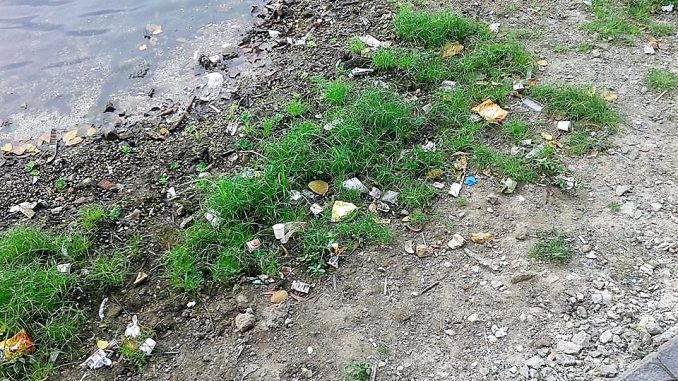
Plastic and other waste littered along the shore often finds its way into the water as well. Pic: Somendramohan Ghosh
The destruction of biodioversity
The alarming level of water pollution was only reaffirmed about a year back when morning walkers were shocked by hundreds of dead fish floating on the surface of the water. Scientists and experts held that this was most likely caused by the plummeting levels of dissolved oxygen in the water, something that could occur when there is a lot of untreated sewage let in. This, coupled with the fact that there has been no dredging of the lake to date since its excavation, leaves little scope for surprise at such tragic decimation of aquatic species found here.
The lake is a birder’s paradise as well, attracting myriads of migratory as well as native species of birds. Yet, as the clubs have flourished and events such as rowing competitions have become more frequent, there has been evident dwindling in the numbers of these avian visitors. The strong lights and noise from various events organised within the premises by different agencies do not help either.
The woes of unending concretisation
In 2014, the KIT launched a mammoth beautification drive that included among other things the creation of concretised pathways and sitting areas, landscaping work along the lake shores, and installation of decorative lights. Over the years since then, the concretisation of this green belt has been incessant.
Walk into the Rabindra Sarobar area and you will notice not one but two pathways for morning walkers and joggers. One of these, with its colourful concrete tiles as shown in the picture below, runs perilously close to the water’s edge, leading one to legitimately question the implications for lake water recharge as well as aquatic biodiversity.
The fringes of the lake and the areas adjoining the concretised walkway have been home to towering trees that have stood guard for decades, if not over a century. Barring a radius of about 1 – 2 metres near their bases, all has been cemented in the name of beautification. As a result, the roots of many of these trees now suffer from inadequate soil and water nutrition. The gradual weakening of the roots, the increasing pest manifestation and consequent withering of many of these natural stalwarts are painful to behold for nature enthusiasts who visit the park every morning.
Despite repeated complaints by the monitoring committee and Banerjee in particular, the concretisation brigade continues to be ever active. Every year, in the guise of maintenance, perfectly navigable tracts of the walkway are taken out and inlaid with the same concrete bricks or tiles, often involving contracts of mammoth value.You will always find stacks of construction material stored at various points in the Sarobar grounds.
To add to the woes, just outside the lake premises, well within the buffer zone, a large part of the green belt has been cleared to make way for a massive car parking zone, to accommodate visitors to one of the clubs that stand on the lake shores. Sand and construction material for this is piled up high near the entrance to the lake, and on a dry, windy day the air inside the Sarobar complex is heavy with the pollutants that these release.
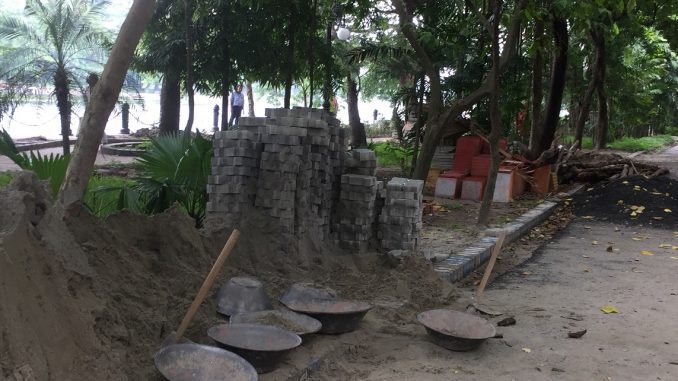
Construction material piled high is a chronic sight within the lake grounds. Pic: Satarupa Sen Bhattacharya
The demand for a children’s park
While it is true that there is plenty of open space in the area including the Safari Park maintained by the Lions Club, the protestors also demand that another public children’s park be created in the open space on the way to the Hanging Bridge, a unique landmark of the area.
This pretty and quaint suspension bridge provides access to the island mosque from the shore and is a site of deep nostalgia for many old timers at the Sarobar. It has always been open to everyone and the mosque was just another place of worship that posed no restriction to the movements of visitors to the lake area. However, a controversy erupted when in 2013, a visitor spotted signs that barred entry for all except those offering prayer at the mosque.
While this was never enforced, regular visitors were riled when pillars appeared in front of a green patch of land right next to the narrow path up to the bridge. The KIT [now merged with the Kolkata Municipal Development Authority (KMDA)] had reportedly erected these to build a gate that would regulate entry to the bridge. However, in the face of sustained agitation by the morning walkers and residents of the neighbourhood, the authorities were forced to pull these down.
The demonstrations however continue as the people have little faith in the system. The people wish to turn that green patch into a free children’s park, so that it can remain a part of the commons and not get converted into a restricted area for any particular community. They are also deeply disturbed by the fact that once the regular crowd of morning and evening walkers have vacated the premises, it becomes a den of anti-social elements who have access to the park through various gates.
“One of the gates that opens to the Anderson Club has to be kept open till 1 am in the club’s interest, and this creates problems. Even otherwise, immoral and criminal activities have been reported many a time by security guards, and we strongly feel that the grounds should have strict access hours. For example, closing the park between 11 am and 3 pm, and then again after 7 in the evening would solve many of these problems. We also believe that evening closure will help the sustenance of biodiversity in the area,” say members of the court-appointed committee.
Thus, every Sunday morning and occasionally on weekday evenings, one can find a group of passionate but peaceful champions of the Rabindra Sarobar movement marching or staging a protest in the vicinity to give voice to their demands and vision for the eco-zone. Their demands are simple and all in the interest of the environment. However, given that these have largely fallen on deaf ears till now, one wonders if it is ultimately a justiciable legal ruling that alone can come to the rescue.
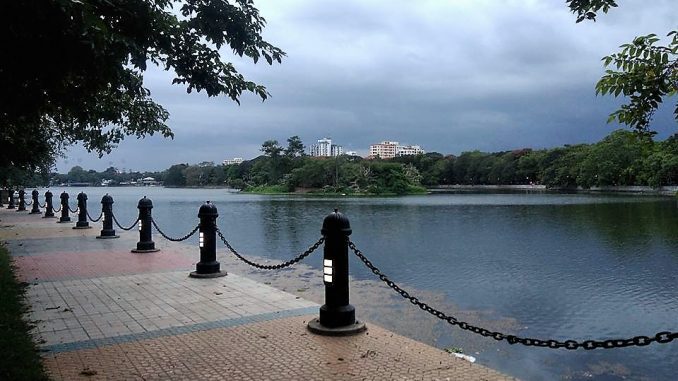
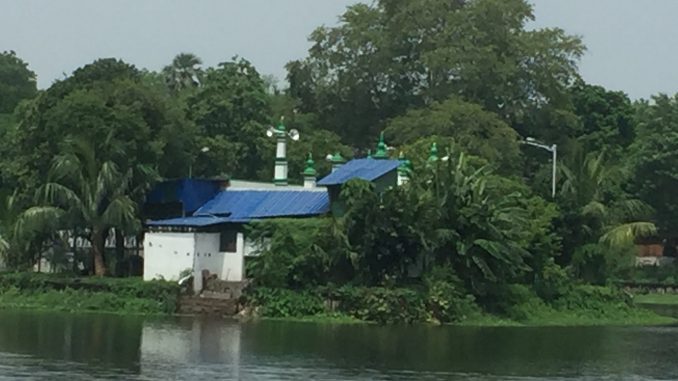
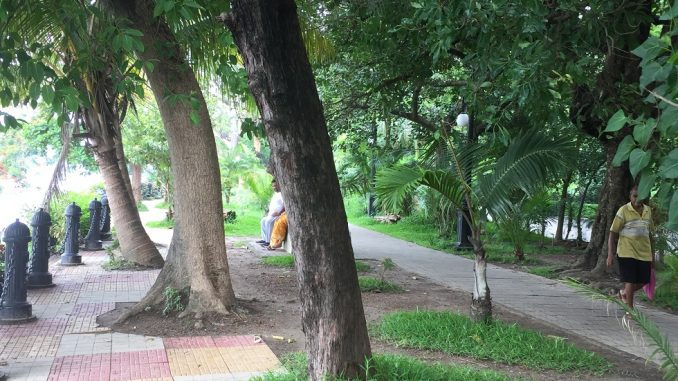
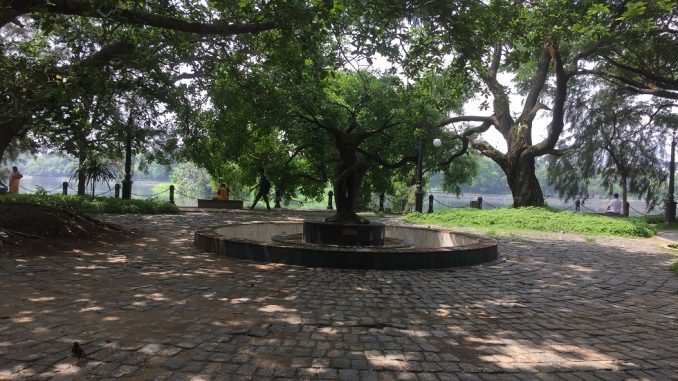

Dear SM,
You are doing well.Some one has to hang the bell n cat’s neck. You are doing just that. Most Indians don’t care about environment because they are so used to the polluted air and water. It is a norm for them. it is no good thinking that china and USA are the worst polluters. General health and well being are much better in China even for working people. There are two kinds of pollution one is avoidable and another is unavoidable. Some industries create pollution but they also create jobs. They are not always avoidable. Avoidable pollution is where people dump rubbish, dead animals, house furniture etc etc. They dump tons of rubbish on the road side because no one will see them and even some one can see them don’t worry them because every one does it.
VOTE BANK POLITICS ON NATURAL ENVIRONMENT
Thank you for organising such protest march to save Ecological balance and Bio-diversity of our Rabindra Sarobar Lake. All the best.